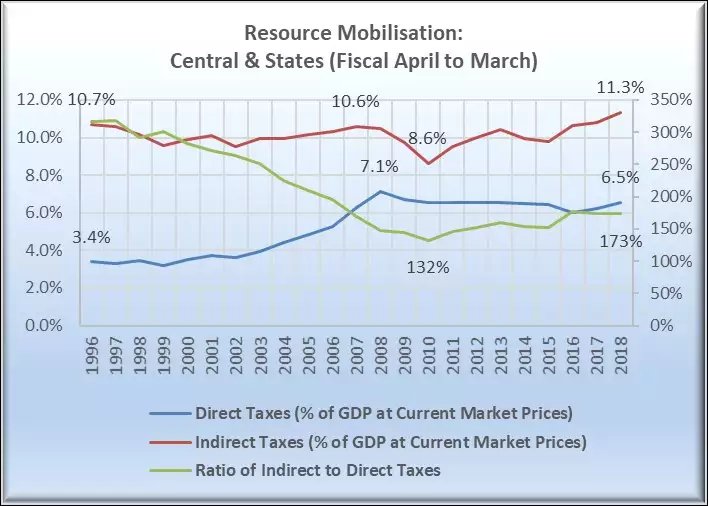
Financing of Healthcare in India
Moral as well as Economic Reasoning requires the #Government to increase its Share of Spend
Thread
My perspective @ETHealthWorld
health.economictimes.indiatimes.com/news/industry/…
@andymukherjee70 @kikumbhar @sritara @ramakumarr @grumpeoldman @ieuditmisra @Dinesh_Unni
Moral as well as Economic Reasoning requires the #Government to increase its Share of Spend
Thread
My perspective @ETHealthWorld
health.economictimes.indiatimes.com/news/industry/…
@andymukherjee70 @kikumbhar @sritara @ramakumarr @grumpeoldman @ieuditmisra @Dinesh_Unni
1. “SDG1, which calls to “end poverty in all its forms everywhere” could be in peril without UHC, as almost 90 million people are impoverished by health expenses every year.”
2. In India, we run a higher risk of impoverishing our people as more than 50% of healthcare expenditure is met by families.., with 60% of rural and 40% of urban families are having to borrow, sell assets or ask for contributions from family & friends to meet hospitalization exp.
3. It has been obvious for many years that the Indian private sector does not have the risk-capital required for infrastructure services that entail long-gestation period and scale. The Indian financial system is equally constrained in this respect.
4. We need to recognise that the cost of provision of healthcare services through private sector is expected to be higher, by the very nature of ownership, for the following reasons:
A. Cost of capital, as the govt. can borrow at 6%, whereas the private sector’s weighted average cost of capital (WACC) will be no less 10% even for highly rated firms. A typical healthcare provider will have its WACC close to 12%.
B. Private Sector firms will not enjoy the same economies of scale as the govt. in buying & building the required infrastructure.
C. Private Sector is expected to have higher nominal wage cost, though its productivity is expected compensate & lower the final cost of service.
C. Private Sector is expected to have higher nominal wage cost, though its productivity is expected compensate & lower the final cost of service.
5. Private sector has an important role to play in bringing efficiency and investing in those of areas of healthcare value chain where the risks are relatively low and payback periods are shorter.
6. Given that our economic policy choices are shifting risk to individuals and households (providing higher flexibility to employer to hire and fire or offer contractual employment, etc.) and we are promoting urban areas as core centres of economic activity where the quality of..
..air is at best poor & living conditions pathetic (i.e., slums or slum like urban habitat), it is the moral responsibility of our leadership to build and sustain healthcare infr & services till an average Indian is in a position to finance them from her or his earnings.
7. Where are the resources?
While the GOI spends about INR 60K cr pa on healthcare, the annual relief provided to the most profitable firms (the firms that don’t even need to invest large sums for growth) in direct taxes last year was 2.5x the annual exp on health.
While the GOI spends about INR 60K cr pa on healthcare, the annual relief provided to the most profitable firms (the firms that don’t even need to invest large sums for growth) in direct taxes last year was 2.5x the annual exp on health.
8. Indirect taxes are considered regressive by design as they hurt the people who don’t have adequate resources for financing their healthcare or education – middle and lower-income families. 

9. @Roshanjnu has highlighted the problem with resource mobilisation strategy very well in his article at
hindustantimes.com/analysis/india…
hindustantimes.com/analysis/india…
10. Similarly, @kaul_vivek has highlighted changes in structure of direct tax collections.
livemint.com/economy/income…
#financing #healthcare #India #economy #taxes
livemint.com/economy/income…
#financing #healthcare #India #economy #taxes
Adding a chart that with latest spends on #healthcare and #education in #India by the Union Government. It excluded the budget spend of INR 35K on vaccination programme, as we don't know if the GOI would spend (& how much) from that allocation. 

CAGR for Education between FY14 & FY22 has been 3.4% and for health 12.42%.
The biggest jump for health was during FY18 of 35.7%. Rest of the time, it has been less than the aggregate expenditure growth.
The biggest jump for health was during FY18 of 35.7%. Rest of the time, it has been less than the aggregate expenditure growth.
@threadreaderapp unroll
• • •
Missing some Tweet in this thread? You can try to
force a refresh







